The 2nd assignment must be shot in Jpeg--I prefer Raw and enjoy “tweaking” in Lightroom. Learning how the camera sees and records a scene , and being able to use this knowledge to create better images in-camera with no PP , has been the purpose of the preceding exercises and projects. I have no idea at the moment of what or how I want to shoot. So I decided the best way of curing this lethargy was to simply take some , even just one or two , shots under one of the conditions needed for the assignment. I took myself upstairs with a car inspection lamp and set my tripod up to do some self-portraiture in a dark room. Having nearly set fire to the room because my lamp overheated I then carried an ordinary spotlight reading lamp upstairs to use as my single light source, My preferred method of working is to use available daylight but I actually enjoyed the challenge of trying to achieve a film noir look on the cheap. Trying being the operative word here , my amateurish attempts are hardly cutting edge but I shot in jpeg, I bracketed all the shots using my light meter, and tried different WB settings to see just how they altered the atmosphere of an image. It’s interesting to see just how much the WB setting contributes to the mood of a picture. The Spike Lee film “Do the Right Thing” is a brilliant example of how good cinematography contributes to the oppressive mood of the film. I personally prefer the more orange than natural looking tones of the two images below as I feel they are more representative of what I was trying to achieve.
Top image F8 1/8 sec ISO 200 @ 24mm Tungsten WB / Bottom image @ 1/6 sec Fluoroesceent WB
I also attempted to bounce some more light back onto my face using a white card.
It's difficult taking self-portraits with no assistant !!!
I have also been trying to think of different techniques to incorporate old photographs with portraiture as a way of showing a connection between past and present--a way of exploring thoughts and feelings. For this image I used a reading lamp and took a series of self-portraits at different focal lengths . I really wanted a wider view to show more of the dressing table and all of the bits and pieces kept there but found it very difficult to frame correctly and use myself as the model. Keeping the light source out of the frame proved awkward. Shooting at slow speeds made many of the images out of focus if I moved slightly and I wanted the mirror reflection to be reasonably sharp in order to clearly see the person I was and have now become. Anyway the image below was the best I could manage at this session but I will continue to explore this concept more.
F9 1/4 sec ISO 320 @ 50mm Tungsten WB
I have been rather unmotivated lately, sometimes work and life just get in the way of regular studying. I want to get started on assignment 2 but the weather has not been accommodating--it seems to be always raining when I have some precious free time to do any outdoor photography. I could write some notes, read a book, anything rather than do nothing, but, worst of all, I have been lacking inspiration. However when I was asked by my daughter to take some photographs
for her friend who is trying to set up a children's bridesmaids dress design company I jumped at the chance. I enjoyed the afternoon and it has given me the impetus to get cracking again. I am unable to put most of the images on my website --something I promised the young models mums. Granddaughter Maisie , who is rapidly becoming my favourite muse, was one of the models , so along with a back view of the gorgeous dresses I am able to show just two of the thirty seven final images chosen out of just over one hundred. I also put into practice the editing skills from the first assignment to whittle the selection down to a manageable portfolio.
Perfect Exposure: The Professional Guide to Capturing Perfect Digital Photographs
[Paperback] Michael Freeman Product details Paperback: 192 pages Publisher: ILEX (6 April 2009)
LanguageEnglish ISBN-10: 1905814461 ISBN-13: 978-1905814466
This a fabulous book and one I would recommend any student on the DPP course to obtain. It offers succinct advice on how to achieve professional results using a digital camera. Chapter 2: Technical makes essential reading to learn just how a digital camera sensor works and sees, supplementing the course notes for Part 2: Digital image qualities. Using a digital camera without the knowledge offered in the book would make it difficult to be truly creative . I know my way around the manual controls of my camera and I like to think I am reasonably in control , but know this is a book I will continue to use for guidance and advice.
I have treated myself to a Sekonic light meter. How hard is it to use an analogue instrument ? I spent a whole evening and the next day just trying to work out how to use it !!!!! Anyway the penny has finally dropped I am glad to say , but why have I chosen to use a light meter when my digital camera has through the lens metering?
A problem with the camera's TTL meter is how it sees and measures light: using reflected meter readings it is easily fooled into over or under exposing images,
hence whites becomes dingy , blacks lose their rich deep tones. Without using an incident light meter it is easy to remedy this TTL metering foible by simply increasing exposure for a lighter than average subject ,decreasing for darker, and possibly bracket the shots as an extra precaution.Perhaps the most important factor to successful photography is learning how to use light effectively and creatively, by measuring ambient not reflected light the Sekonic meter can (hopefully) be used to help me take more accurate exposures in tricky situations. I realise that it will not always be practical to use the hand held meter, but in a controlled situation with plenty of time I shall be using it. http://www.sekonic.com/ Putting my light meter to the test I took an ambient light reading and a through the lens reading using my camera outdoors on a really bright day in a slightly shady
area of my garden.
Outdoors
F5.6 @ ISO 100: TTL exposure 1/40
F5.6 @ ISO 100: Light meter exposure 1/125
I am really happy with the result because with little effort on my part the light meter has made a better job of allowing me to make the correct exposure for the main
subject--William. This is a jpeg image without any further post processing but I shall probably still bracket shots when I am not 100 % certain and do not want to lose the opportunity to obtain a good well exposed shot in camera.
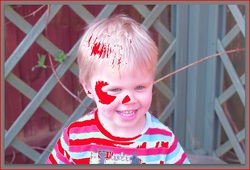 The TTL exposure @ 1/40 showing unacceptable clipping with a loss of information and colour saturation.
Clipped areas in red
http://www.paoloroversi.com/diaporama/photographs.htmlMarch 2012 British Journal of Photography
This months edition featured a really interesting article about fashion photographer Paolo Roversi. What really strikes me about his imagery is its power showing a visible connection between the photographer and subject. He comments “I always try to put a lot of myself in my pictures , to make them as personal as I can”. His humble studio is still the same place that he started out in over 30 years ago, “ its not a big, empty space” and he uses this environment to create the atmospheric images. He likes long exposures feeling “ the picture of the subject is more intense” , how I would love to use this technique , I have attempted long exposure portraits but not very successfully. His images have such power drawing you into the frame and beyond.
“My mind is a camera” ---Paolo Roversi. What a unique way of expressing how he creates his art, for that is what I really feel his work is, not simply cold, emotionless fashion shots but compelling beautiful images.
Images Copyright Paolo Roversi 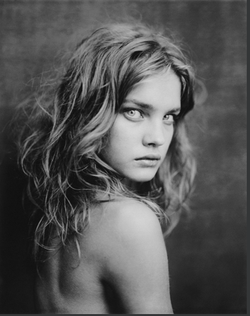 Eyes are so important in portraiture , just look at the hypnotic way this girl stares out of the frame with an almost haunted look. The black and white image contrasts with the two richly toned portraits below , but is still equally as sensual.
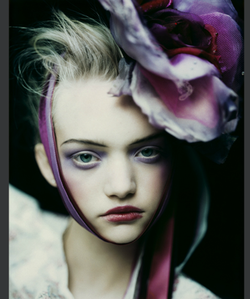 This image is beautiful. The deep sensual purple tones of the ribboned headgear and lipstick contrast with the models delicate pale skin , her clothes and hair. The plain black background keeps the look simple but visually very effective.
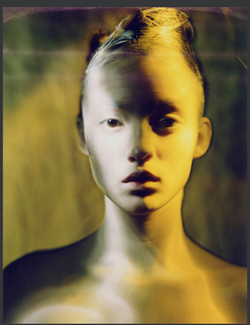 I find this an interesting image, the slow shutter speed and creative use of colour combine to make an ethereal and intriguing shot.
Went to meet friends at Stratford-upon-Avon today. We decided to have a look around the recently renovated Royal Shakespeare Theatre and came across a fabulous exhibition.
Tom Hunter's A Midsummer Nights Dream was inspired by the Shakespeare play of the same name. The photographs are visually very striking, dramatic , and full of minute detail cleverly referencing the play's themes. Translated into a modern setting, using a troupe put together from his local neighbourhood, each subject plays a role in the visual masquerade , motivated by the work of Romantic painter Henry Fuseli (see below) .
His website is well worth a look at , the images draw inspiration from Johannes Vermeer and are carefully considered in their use of light, hues and composition. His subjects, inhabitants of Hackney, London, show an inner poise and demonstrate his affinity with the people and area. Using an established approach he creates thoroughly modern and individual images. Describing how his personal style evolved Tom comments "One of the attractions of photography for me is this notion of realism, the belief that the camera never lies. Vermeer gave us a window into a real world but also a world imagined through his art. It is exactly this that attracts me to photography. The images are real, yet created by the person manipulating the camera." Tom Hunter.
Images Copyright © Tom Hunter
http://www.nellipalomaki.com/home.html I particularly enjoy portraiture but want to start considering the genre in greater depth, I want to try and reveal what is hidden beneath the skin, reveal the person underneath . Is this possible and how do you do it ?I think photographer Nelli Palomaki manages this very successfully. I first read about Nelli Palomaki in Black + White Photography ( January 2012 issue ) as I was preparing work for my first assignment . Her approach to portraiture is something I find compelling and visually very appealing. She manages to capture such intense emotions that make me want to know more about each individual . The children are allowed to simply stare, no smiles here , creating a powerful and though provoking portfolio of black and white images. The lighting is superb, she only uses available natural light. Quite a number of the images have been taken with just a simple black background, drawing all attention to the subject in the frame. She comments " a good portrait can carry so many memories through so many years--and you don't need more than one. It was a miracle to have your picture taken 100-150 years ago, and I really believe there could be the same magic again. There has to be an image behind all of these image that says something more" pg 12 Black + White Jan 2012. Her studied approach is at odds with the almost frenzied way casual snapshots are taken and are part of our everyday existence. This deliberate technique is at the heart of her meaningful and powerful images.
Images Copyright © Nellie Palomki
http://www.ikon-gallery.co.uk/ Ikon gallery, Birmingham. Visited the Ikon today.
A series of images spanning between 1972-79 all taken in the Midlands, interestingly Myers
was not a photographer when he started his project. I found the exhibition evocative, I grew up in the Midlands, these images brought back so many memories of friends , family , and places, now long gone. For this reason I found
viewing them bittersweet. His portraits of local people, of whom the majority lived within walking distance of his home, are not casual snapshots:he used a large format Gandolfi camera. The subjects themselves are not glamorous "
Myers had identified a major part of the population that went about its business camouflaged in ordinariness and not in the least picturesque" * . Its this "ordinariness" * that make them all the more poignant, they record a social era that is unrecognisable now.
*( pg 9 Paperback, black and white illustrations, 128 pages, W200mm x H245mm. An illustrated catalogue to accompany John Myers exhibition at Ikon. Essays by Paul Lewis, writer and photography specialist and Eugenie Shinkle, photographer writer and senior lecturer in Photographic Theory at the University of Westminster.)
My Mac monitor and Epson R2880 printer are now both calibrated. After some research I chose X-Rite ColorMunki Photo software and it was reasonably easy to set up. The cost of this software--£295--- may prevent some from making the purchase but I decided to use some Xmas gift money towards it and feel it is money well spent.
I have been advised by a couple of OCA students on the Flickr site that prints may appear dark using the combination of a Mac and ColourMunki and to increase the brightness prior to printing. This is something I am now aware of and will need to be prepared for some initial trial and error .
World record paid for a digital image :Rhine II Andreas Gursky
http://www.guardian.co.uk/artanddesign/2011/nov/11/andreas-gursky-rhine-ii-photograph
A digitally manipulated image by Andreas Gursky has sold for a record £2.7 million and I must confess I am a bit bewildered by it !
Its a minimalist image consisting of strong horizontal lines but any other elements that were originally in the frame have been digitally removed. I personally find it cold and emotionless to look at. However Gursky's images are printed huge--this one is 80 x 140 inches--- and is probably better viewed as such rather than on a computer screen to appreciate the scale. Manipulation is frequently used to enhance or alter reality but interestingly Gursky states "his aim in using digital technology is not to create fictions but rather to heighten the image of something that exists in the world. " http://beta.tate.org.uk/art/work/P78372?text_ The image could be of anywhere--a generic place--that symbolises the fictional truth Gursky wants his image to represent. What does his image tell us about the Rhine itself ? Not a lot as any elements that might provide clues to the exact location have been removed. "Christie's described it as "a dramatic and profound reflection on human existence and our relationship to nature on the cusp of the 21st century". http://www.guardian.co.uk/artanddesign/2011/nov/11/andreas-gursky-rhine-ii-photograph.
Looked at in that context the image makes quite a bleak social comment, and must reflect what I feel is Gursky's rather pessimistic view of the world around him. Hence in hindsight a rather good example of how digital manipulation can be used to not only alter reality but be used to show a very personal viewpoint. I initially commented I found the image emotionless--is that what he wants me (the viewer) to see and feel, share his vision? It certainly worked.Image Copyright © Andreas Gursky
|
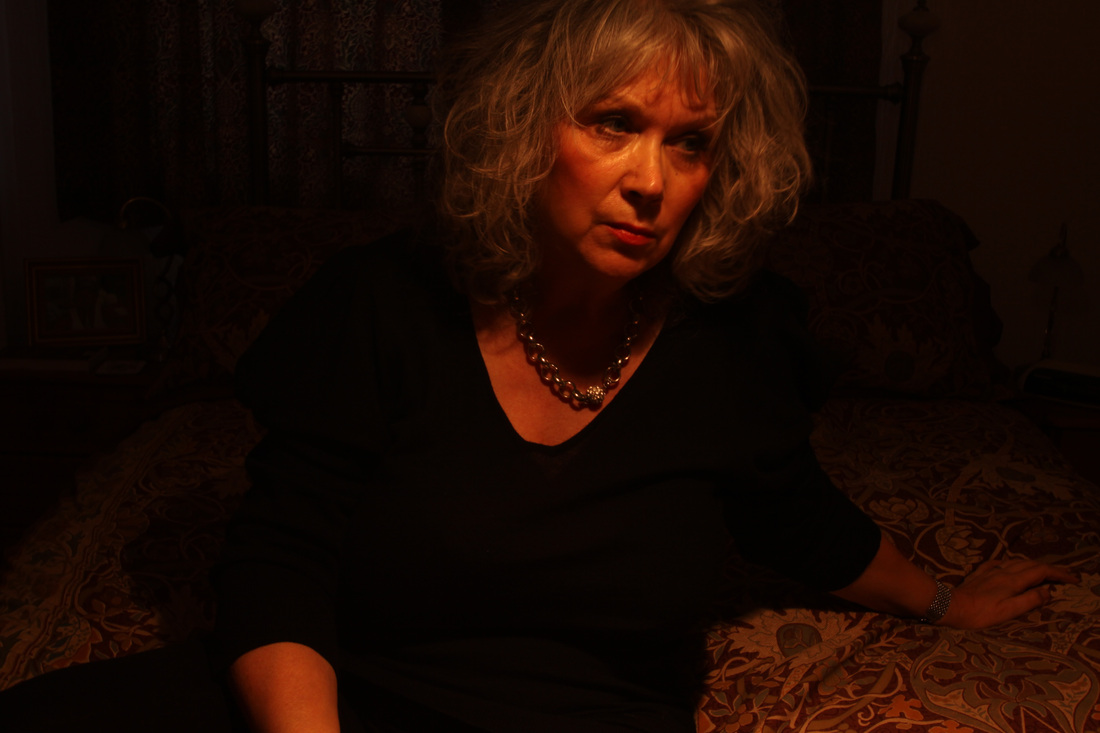
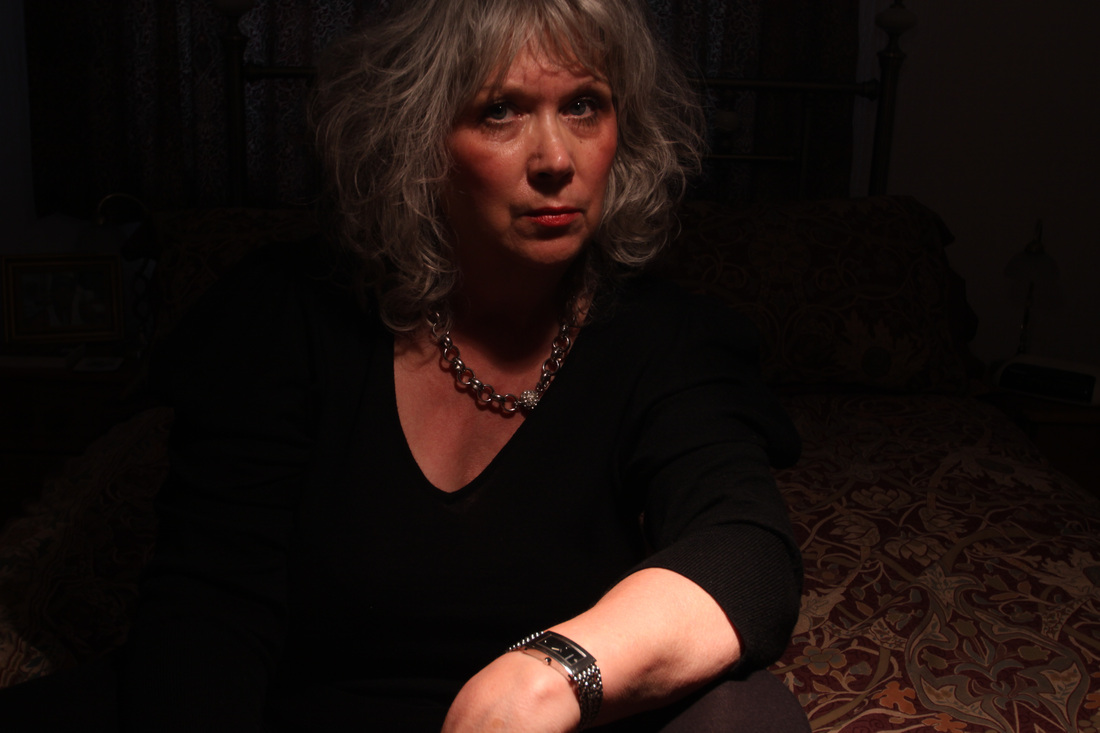
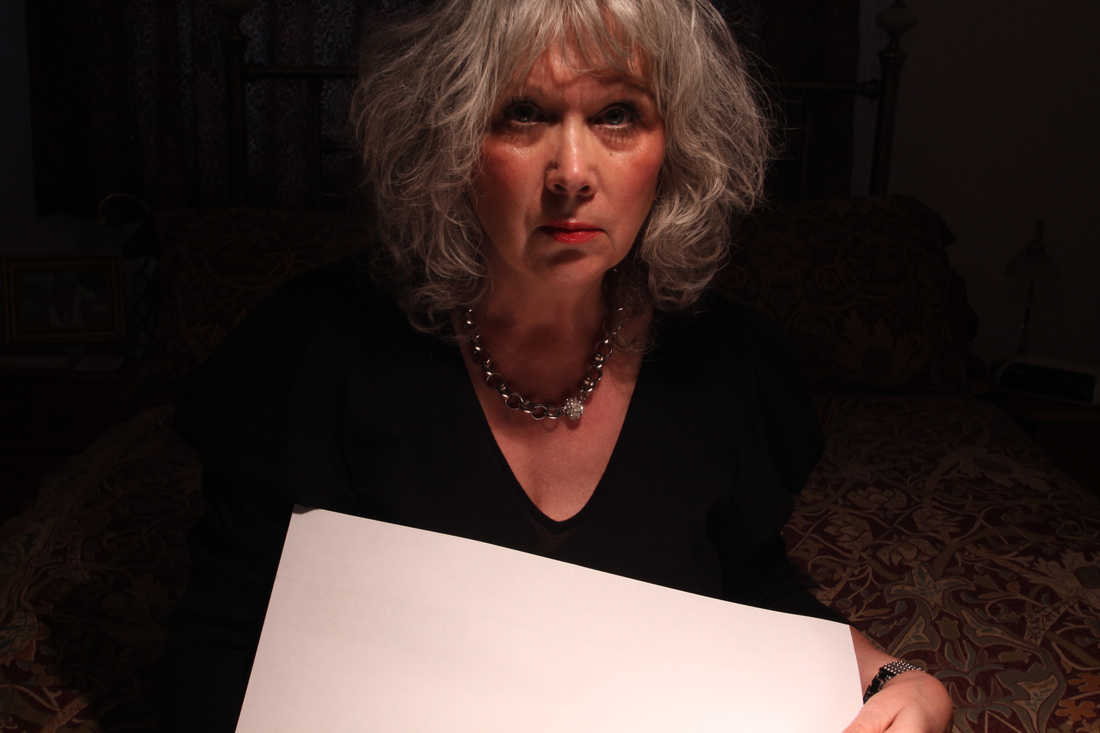
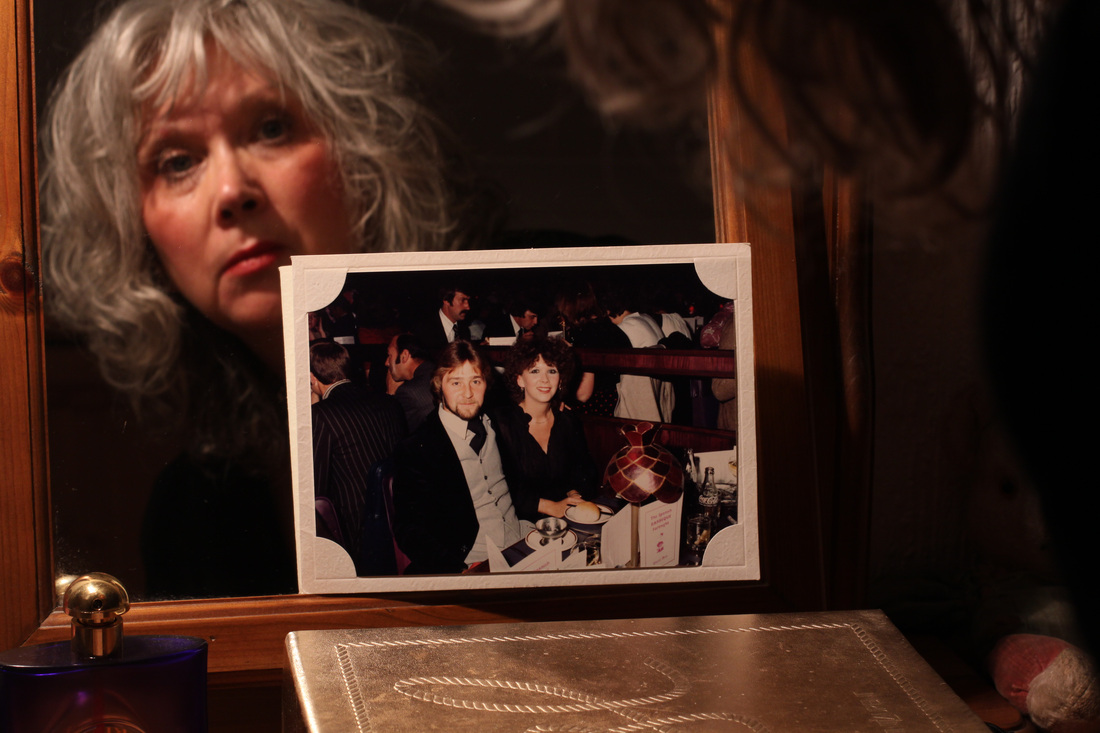
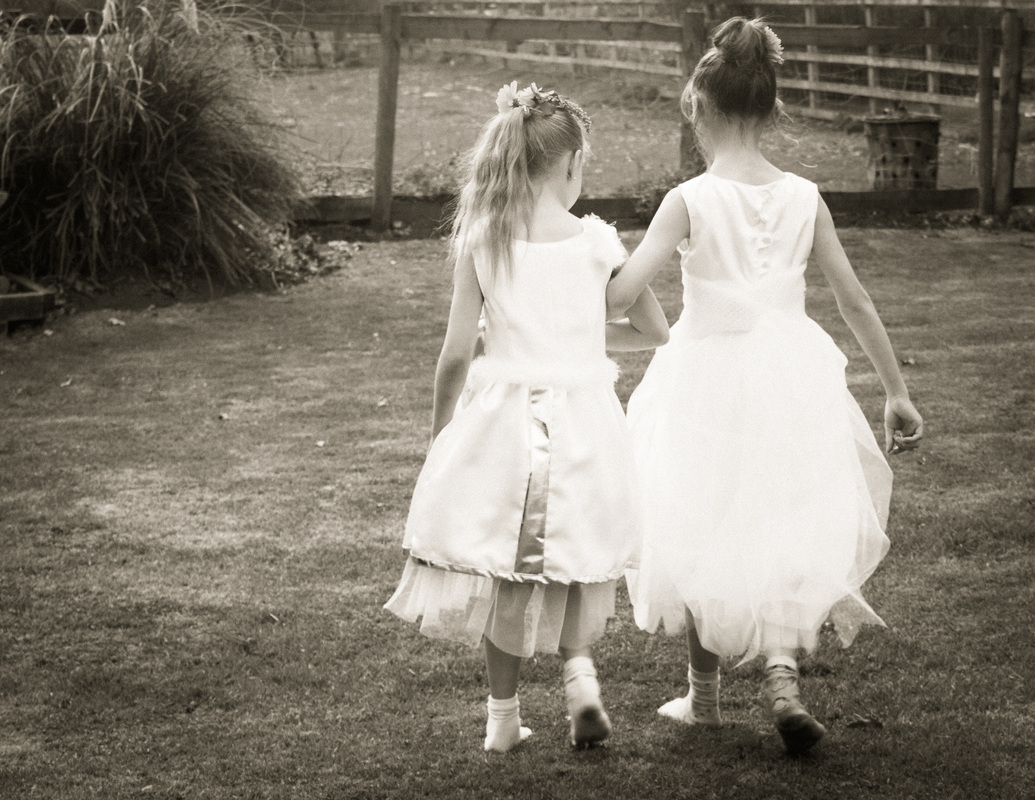
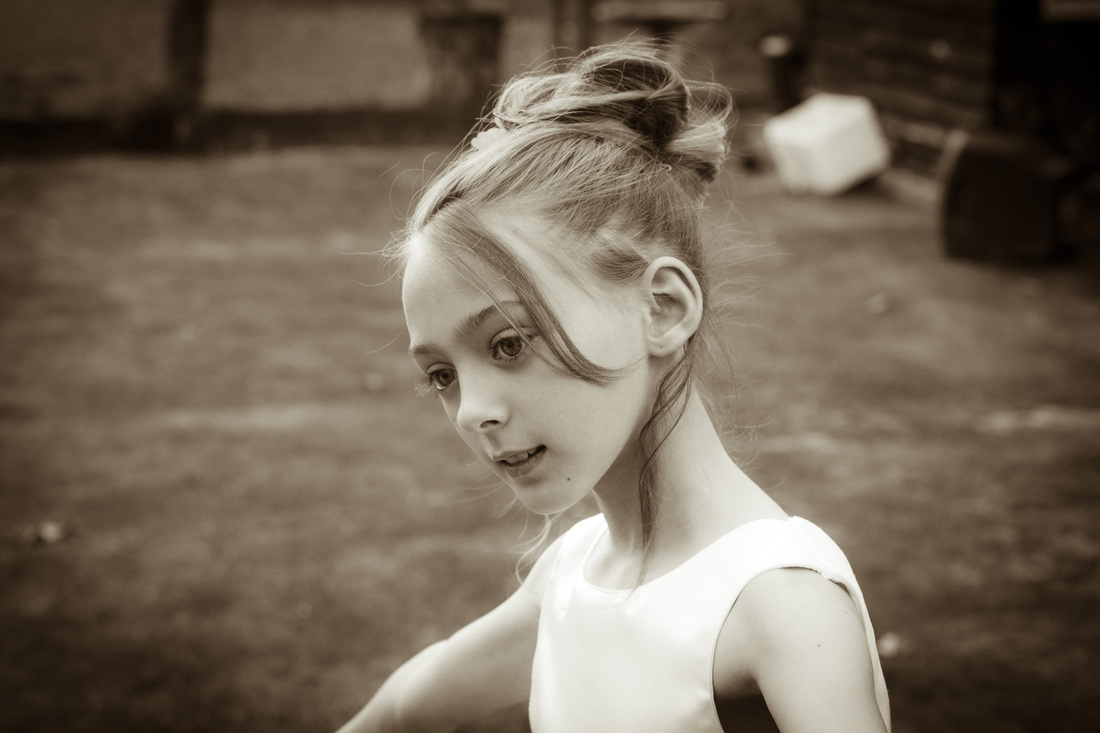
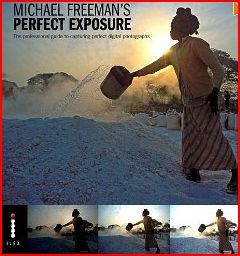
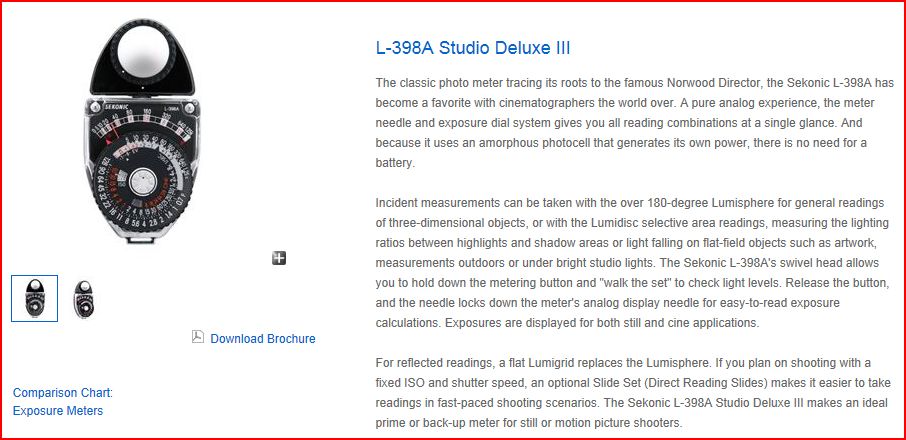
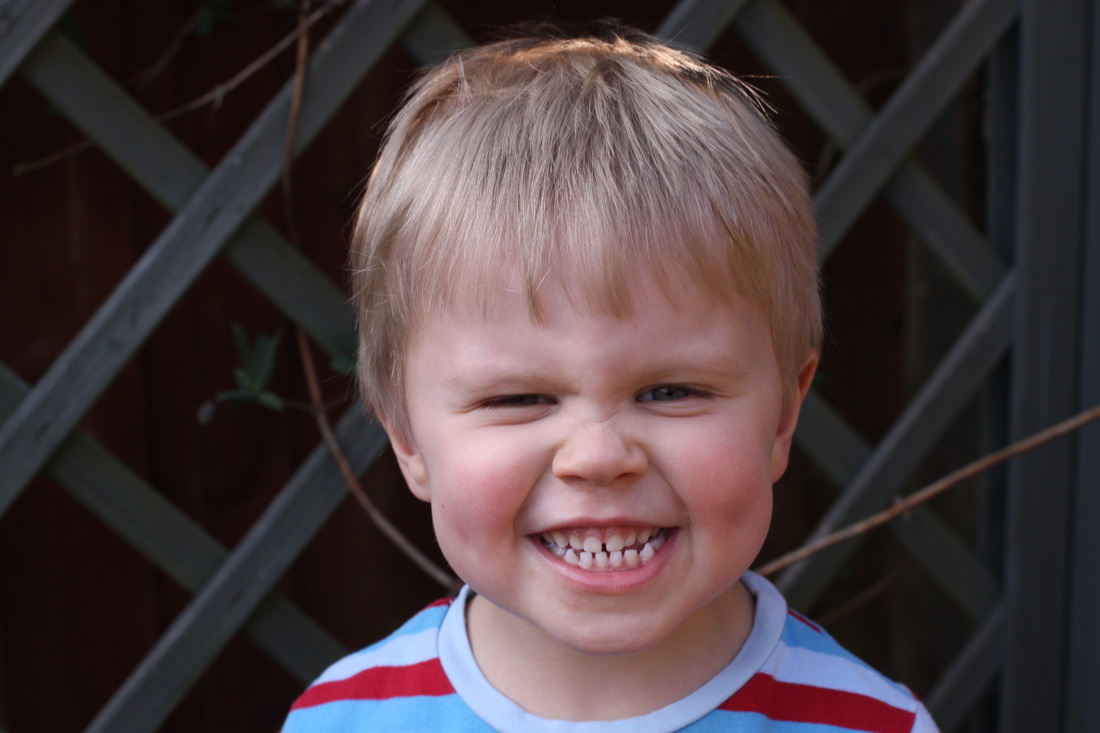




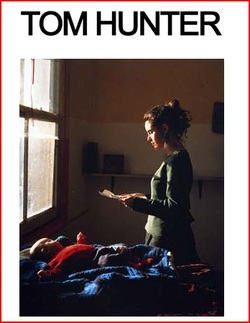
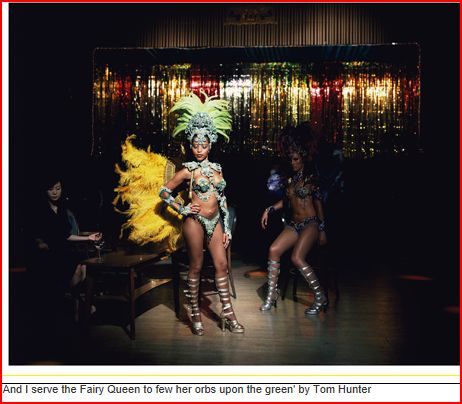
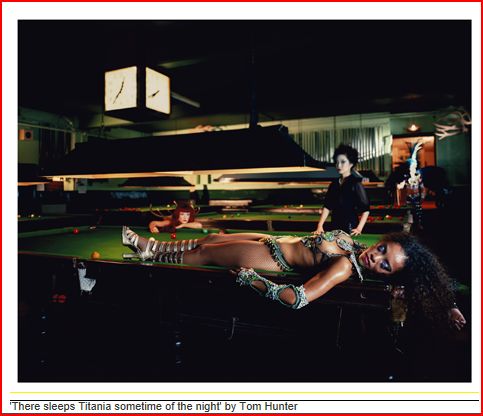
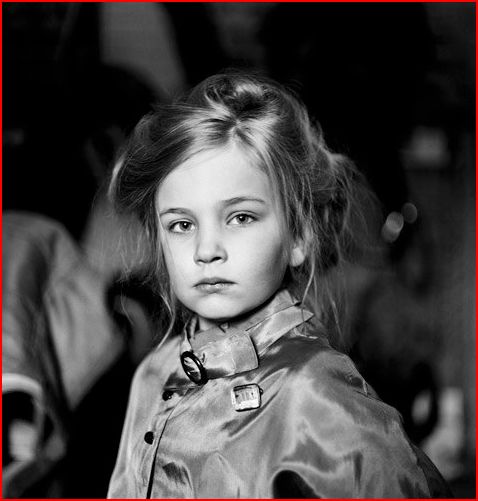
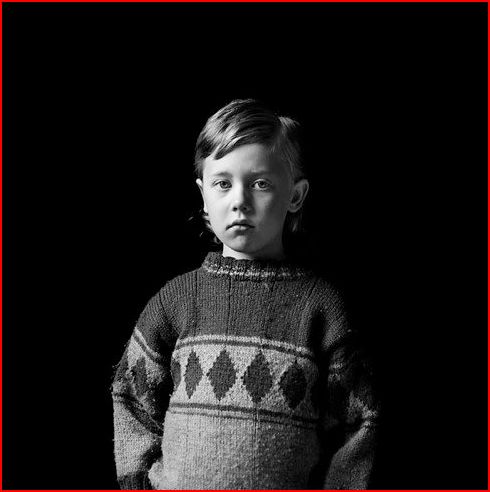
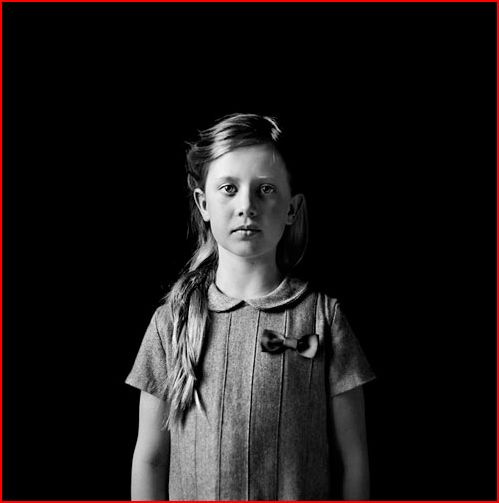
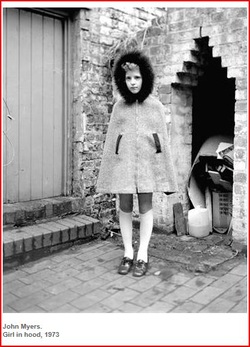
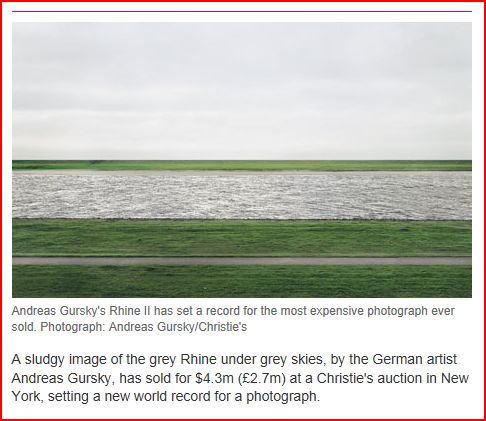
 RSS Feed
RSS Feed